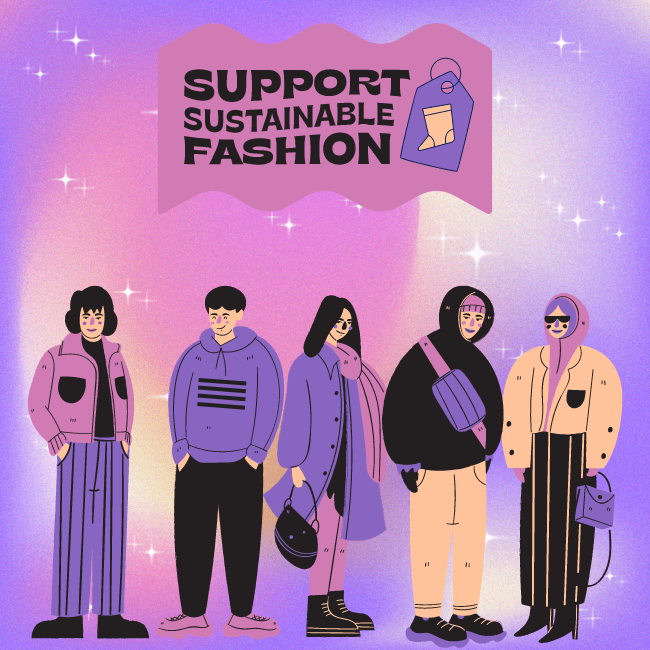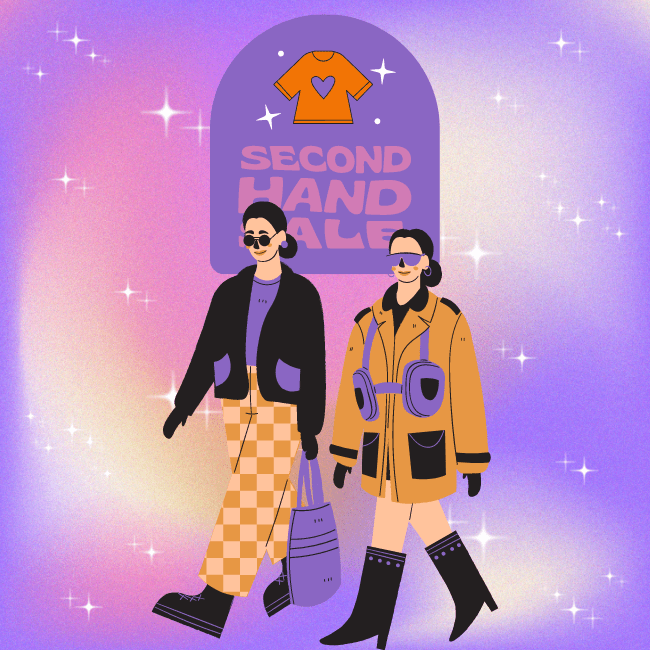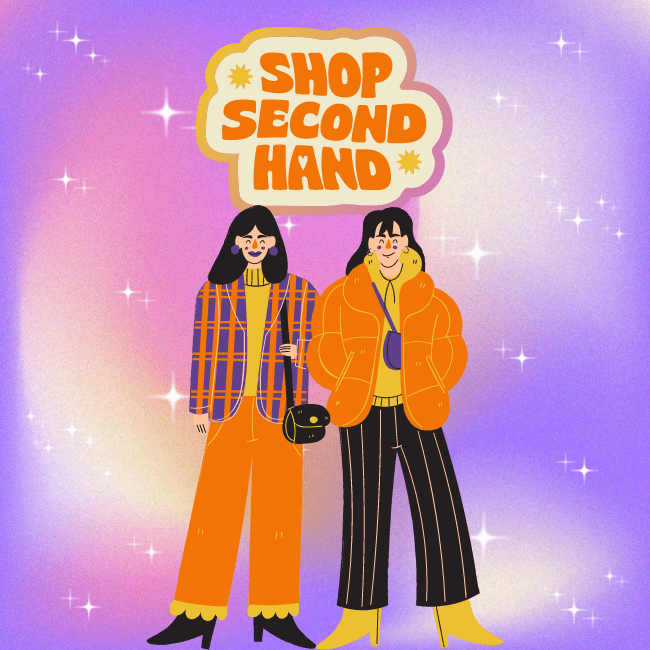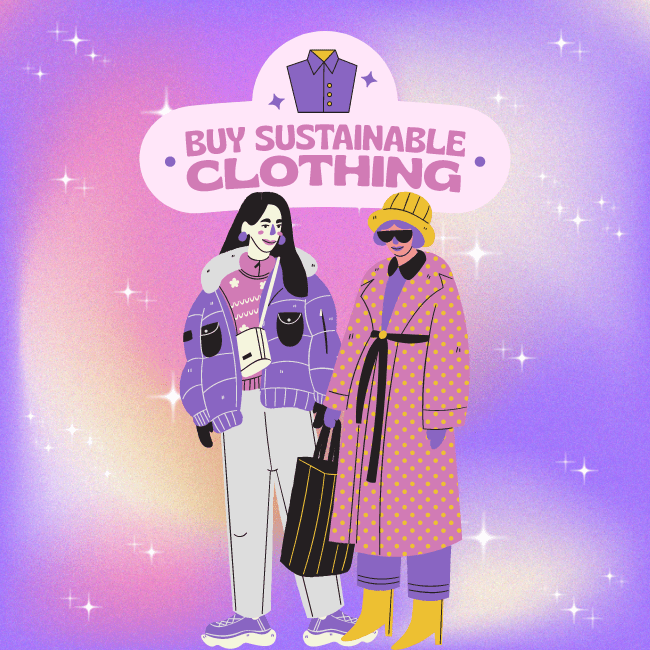Subscribing to slow fashion and embracing secondhand clothing

Slow fashion invites fashion enthusiasts to look at their shopping habits. This also makes them ask the question of whether or not they truly need a specific item. With social media influencing our purchases, especially with trends, the whole thing about this concept is to buy one high-quality product rather than multiple items that you will surely throw out or wear just once.
So, what is slow fashion?
Earth.org describes slow fashion as a movement that advocates for environmental and social justice in the fashion industry. The defining point revolves around how it zeroes in on the problem of overproduction and overconsumption. The key philosophy also involves shifting from quantity to quality, both in production and consumption. Manufacturing should also respect the environment through the usage of low-waste processes and avoiding harmful chemicals.
Although the pros of slow fashion revolve around how important it is to lessen waste, there are cons that make it hard for a lot of people to subscribe to it. A lot of pieces are far too simple which is a downside for enthusiasts who express their creativity and individuality through fashion. Aside from that, a lot of easily-found pieces are often not cost-efficient. Most of the time, it even becomes more expensive than some fast fashion brands.

But, subscribing to slow fashion can be done with a few simple steps.
1 | The 30 Wears Test
Eco-Age co-founder Livia Firth and journalist Lucy Siegle actually coined the term The 30 Wear Challenge in 2015. They referred to this to encourage shoppers to ask themselves if they could wear one piece a minimum of thirty times before they buy it. Although the 30-wear rule feels a little dated, this means that we have to aim to buy pieces that we will be able to keep forever and not just thirty times.
2 | Acquire more trans-seasonal clothing
The Philippines only has two seasons — rainy and sunny. And, it may not be that hard for Filipinos to acquire trans-seasonal clothing. The only thing you’ll need is a high-quality jacket or blazer that you can put on when it’s cold and remove when it’s warm. But, that’s the whole point when it comes to slow fashion. That means you don’t need to wear season-centric pieces. Instead, you will have to acquire items that you know can work all year round.
3 | Upcycling outdated or unwanted clothes
Instead of throwing away outdated and unwanted clothes and adding to the already-growing waste from the fashion industry, you can either repair them, donate, or even upcycle them. You can learn how to repair a piece of clothing yourself or you can pay a professional to do it for you.
There are also thrift shops that would love to get your unwanted clothes. So, donate them to a good cause. Aside from that, you can also help other people to be more sustainable as they invest in your old pieces rather than buying something new.
Some thrifty fashion enthusiasts, on the other hand, use your old pieces to make a new trendy one that they can wear whenever and wherever they want. You can do that, too. Don’t throw them away and make it an excuse to buy something new. Think twice and be more sustainable.

Millennials and Gen Z embrace secondhand clothing.
Whether it’s for ethical or purely for money-saving reasons, millennials and Gen Z apply ethical principles to their general fashion purchases. Plus, the same age group has even turned their fashion into cash and sold their unwanted clothes on online thrift stores.
London-based market research firm Mintel even noted that swishing or the act of swapping clothes with friends or acquaintances has started to become a trend. According to Fashion Network, Gen Z consumers have also become most interested in renting out clothes rather than buying them.
In case you didn’t know, online thrift stores have become a thing for the past few years. ThredUp, an online thrift store that ships to the United States and Canada, even shared their report last June 2021 which gave readers an insight into the resale industry.
The ThredUp report, on the other hand, showed that the buying and selling of used clothes have become mainstream. And, of course, any stigma surrounding thrifting pre-worn goods have almost basically disappeared.
In the Philippines, on the other hand, online thrift stores appear on Instagram as a way to contribute to slow fashion. Although it isn’t quite the same experience as shopping at your favorite ukay-ukay, you can find the joys of saying ‘mine,’ ‘steal, and ‘grab’ in the comments section of a product post.
The fastest fingers will win and each word corresponds to a different price. CNN Philippines’ Marga Buenaventura even said that online thrifting is not only sustainable. But, for her, it feels a lot like the real community that bigger brands are attempting to espouse.

With that said, brands and retailers have to strategize around new consumer values.
With more consumers wanting to subscribe to sustainable fashion, brands need to make sustainable efforts that become a core focus in brand strategies. Edited.com rounded up the essential themes retailers need to address in order to create a better future for their consumers and the entire planet.
Aside from that, retailers also need to align themselves with new consumer values and reset to focus on investing in the right products. According to City AM, high-street retailers follow in the footsteps of their online rivals. They have now started to offer more secondhand clothes to lure in shoppers who are subscribed to the slow fashion concept.

These include J. Crew Group who recently announced the launch of their resale program, J. Crew Always. This aims to sell curated vintage styles in select stores. Aside from that, Selfridges also set up its own Reselfridges scheme. Meanwhile, Marks and Spencer, Boohoo, Tesco, ASOS, and Asda have committed to the Textiles 2023 action plan. This, on the other hand, aims to promote recycling clothes.
So, will you be subscribing or contributing to slow fashion? Let us know in the comments section below!
Angela Grace P. Baltan has been writing professionally since 2017. She doesn’t hesitate to be opinionated in analyzing movies and television series. Aside from that, she has an affinity for writing anything under the sun. As a writer, she uses her articles to advocate for feminism, gender equality, the LGBTQIA+ community, and mental health among others.











